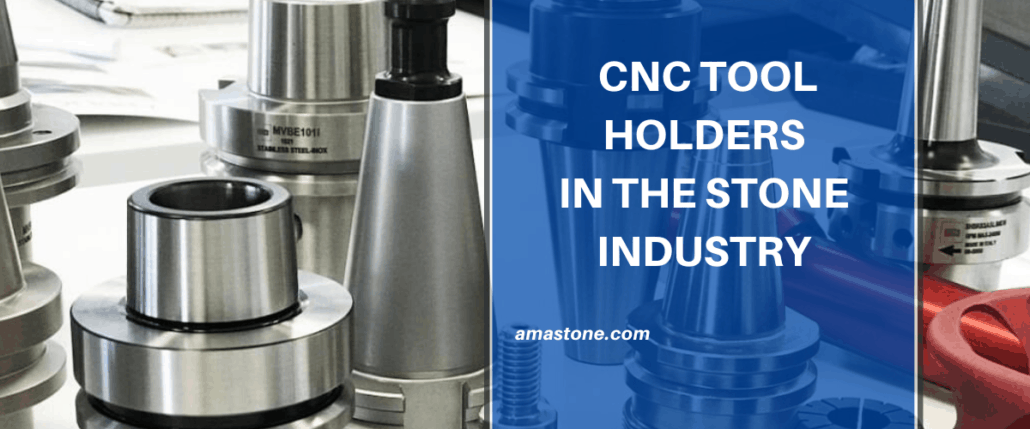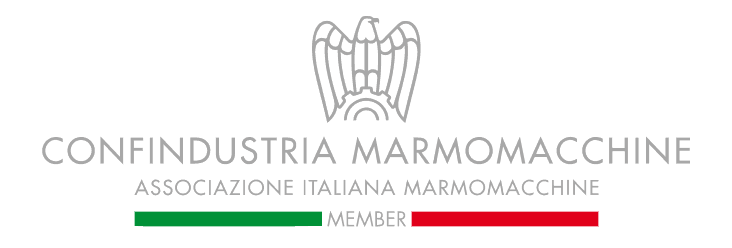Numerical control machines (whether they are CNC routers, machining centers, or lathes) use different tools depending on the specific processing to be performed. There are various types of tools because they are adapted to applications in order to obtain precise machining in the shortest possible time. Different tools also have different connections to the machine spindle, and therefore different tool connections/fittings. In this post, we are going to see the different tightening techniques and tool clutches. Precise processing is therefore achieved through at least 3 elements: a professional CNC machine, a good diamond cutting tool, and a precise, fast, and safe clamping system.
That’s true in all industrial sectors and therefore it also applies to CNC machines for working stone, glass, wood, metal or plastic.
Below we list the 4 most common tool fitting families and highlight their characteristics:
- ER Collet connection for straight shank tools
- Thread connection for ½’ Gas tools or M10, M12 and M14 tools
- Flanged connection for stubbing wheels and flanged tools or extensions
- Profiling wheel connection

Cnc Tool Clamping Systems
Each of these CNC tool clamping systems has well-defined characteristics and allows the use of tools that have a well-defined purpose.
Please note: You must be familiar with the characteristics of each tool fitting in order to always choose the one most suitable for the machining you are going to do.
ER Collets for straight shank tools
The ER Collet allows clamping tools with straight shank. The collet is what holds the bit in place.
If you are a CNC Machinist you have certainly already used the bits for writing/engraving (for marble or wood for example) which generally have a 10 mm cylindrical shank.
An ER collet tightening system consists of a housing for the collet and a tightening ring nut to tighten the collet itself. If the spindle in your router has a half gas connection you need a half gas adapter to ER collet like this in the photo:
If instead, the spindle has an ISO cone connection then you need an ER Collet Chuck Holder Cone.
There are different types of ER collets that differ in size, and in the maximum shank diameter that the tool to fit can have.
In the field of marble processing, CNC machines normally use these 4 types of ER collets:
- ER16 collet – allows clamping tools with cylindrical shank up to 10 mm in diameter
- ER20 collet – allows clamping tools with cylindrical shank up to 13 mm
- ER25 collet – for tools with cylindrical shank diameters up to 16 mm
- ER32 collet – the largest for clamping tools with shank up to 20 mm
Note, however, that small ER collets also have a smaller ring nut and the smaller ring nut takes up less space.
CNC routers for engraving, for example, are not big machines like machining centers for which they have a reduced useful Z.
We often found ourselves in the position to be able to do a certain process by increasing the usable working height by modifying the ER collet. Example: By placing an ER 20 collet, instead of an ER25 collet, we were able to use a diamond tool with a 12 mm cylindrical shank but we have reduced the size of the tool attachment and therefore increased the usable working height.
Thread connection for ½’ Gas tools or M10, M12 and M14 tools
The 1/2 ″ thread connection (half gas) is the most common type of tool tightening because many tools have half gas connection such as many finger bits in the market.
In CNC routers for marble workers with manual tool changer system, the half gas fitting is often the native connection of the electrospindle. It means that no type of adapter or spindle cone is needed to connect the half gas tool to the spindle.
In CNC machining centers with automatic tool change, or with a quick release of the tool, the clamping system provides a tools holder cone with a female half gas connection.
The thread connections M10-M12 and M14 are used for small diameter tools where a 1/2″ or M30 thread would be too large.
We find this type of tool fitting especially in the adapters and therefore not directly in a tool holder or as an electrospindle interface.
The electroplated interchangeable heads for marble, for example, often have an M-type fitting because they connect to the extensions.
The M30 thread connection, having a diameter of 30mm, is more robust than the 1/2″ connection. This thread can be found directly on a tool holder or on the shaft of the electrospindle.
Flanged connection for stubbing wheels and extensions
If the application to be performed with the CNC machine involves material removal operations, such as heavy break-ins and lowering, it is necessary to use diamond stubbing wheels that come with a flanged connection.
The stubbing wheels are subjected to strong tensions during the machining and therefore they need a flanged connection. The flanged connection is robust and safe and allows us to perform heavy machining.
It consists of a central coupling and 6 holes for as many locking bolts (one flange).
The flanged connection is also recommended for the extensions or adaptors that are longer than 100 mm in order to reduce the vibrations that you could have with another type of fitting.
Arbor Connection for profile wheels
The arbor connection for profile wheels is a tool fitting used for tools with a central through-hole.
It, therefore, consists of a cylindrical part where the tool is inserted, which is tightened by means of a washer and a countersunk head bolt.
Commonly the cylindrical part has a diameter of 22mm or 35mm, but there are also those that have a 12mm or 45mm arbor diameter.
Conclusion
As we have seen for any application there is a specific tool and for any tool, there is the specific interface to use.
To switch from one fitting to another there are also various adapters and the various extensions that can have different heights and lengths in order to increase the useful Z-working size of the CNC machine.
The CNC operators in addition to having a kit of diamond tools to work the different materials must always have a kit of extensions and adapters available to pass from one fitting to another in order to increase the machining possibilities of the machine.

 Diamond Blades
Diamond Blades Angle Grinder Tools
Angle Grinder Tools Polishing Machine Tools for Stone, Marble and Granite
Polishing Machine Tools for Stone, Marble and Granite Texture tooling
Texture tooling Adhesives and glue
Adhesives and glue Ceramic, Granite and Marble Drill Bits
Ceramic, Granite and Marble Drill Bits Sculpture – Stone carving tools
Sculpture – Stone carving tools Diamond Wires for Granite and Marble Quarries
Diamond Wires for Granite and Marble Quarries Cemetery and Graveyard Accessories
Cemetery and Graveyard Accessories CNC Vacuum Pods
CNC Vacuum Pods CNC Tool Holders
CNC Tool Holders CNC Tool Forks
CNC Tool Forks Positioning Alignment Lasers
Positioning Alignment Lasers Material Handling
Material Handling Machinery
Machinery Spare parts
Spare parts Electrical Spare Parts
Electrical Spare Parts Personal Protective Equipment
Personal Protective Equipment

